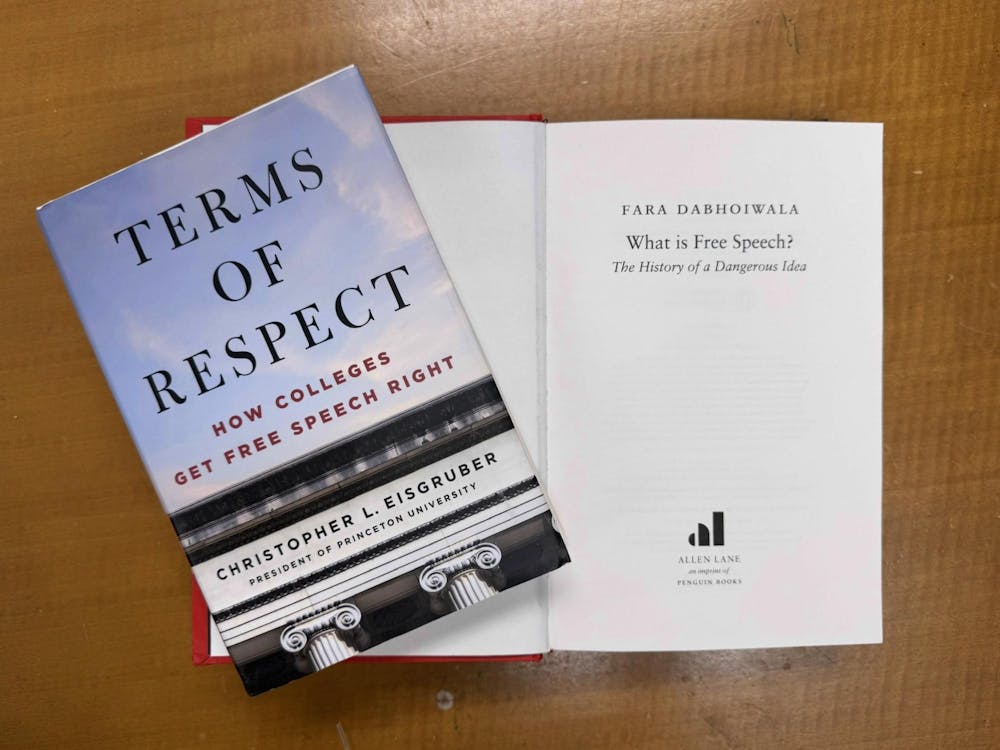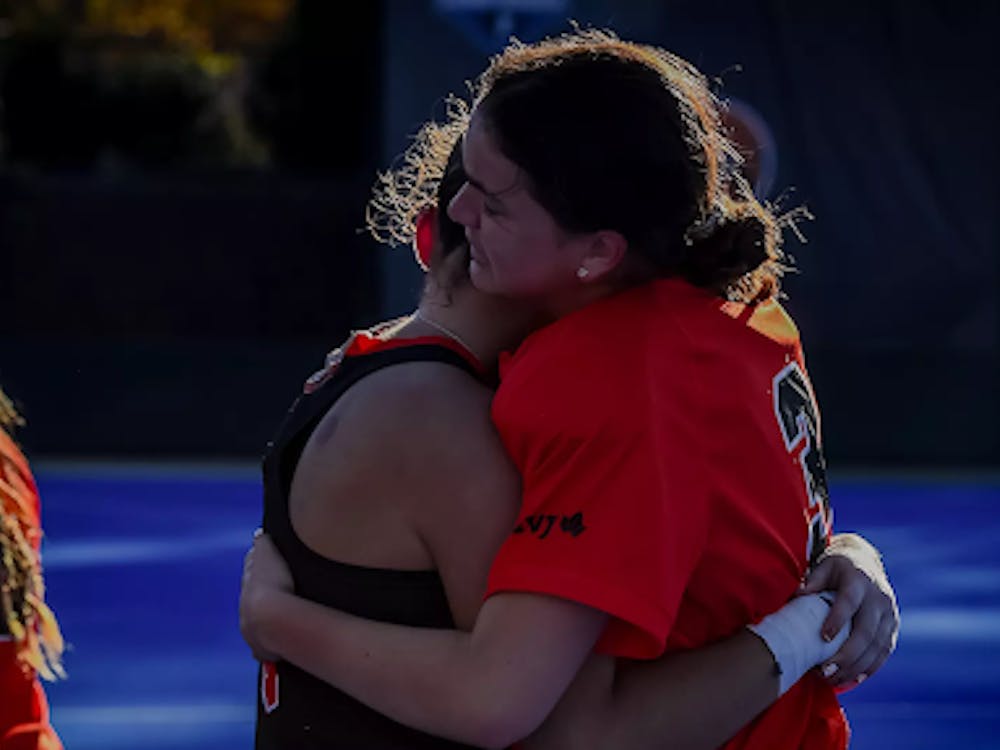What if the muse was repurposed to make the art itself? As efforts to conserve the natural world become more urgent, filmmakers Katherine Bauer and Joyce Lainé are shining a light on the potential plants hold, both on the silver screen and in the darkroom.
The duo came to Princeton’s James Stewart Film Theater on Oct. 6 to share their presentation Turn the Light Around: 16mm Performative Plant-Processed Films.
Bauer and Lainé are members of Atelier MTK, a 30-year old French film lab, and Le Ratoire, a film collective that stages, shoots, develops, and edits their films in a single go. Bauer and Lainé presented nine Le Ratoire’s shorts, each strip of analog film developed using a mixture derived from the plants native to the shooting locations.
One such plant, stinging nettles, was used to develop the film for “Friendship is not Always like Cross-country Skiing,” the second short shown in the collection. Dripping with carefree nostalgia, the sun-soaked film shows naked bodies swimming freely in the woods, their figures intercut with shots of the local flora. Serenaded by the backdrop of errant music, the film highlights the freedom and release found by its subjects in the wilderness. “The luscious bodies of summer shimmer with the colors of the plant,” Bauer announced when introducing the film.
After the screening of the films, Bauer explained the origins of Le Ratiore’s unique approach. Vitamin C, caffeic acid, hydroquinone, metals, and tannins traditionally make up the darkroom chemicals used to develop analog film. Vitamin C is the most crucial part of this formula, and it was often combined with instant coffee in the ’80s to give films and photos a darker color. In some cases, tea made from plants was used to replace coffee.
“So it was our knowledge of the way this formula was working and trying to push it even further, so that you wouldn’t have to buy anything,” Bauer said. “Maybe we could see if the plants, if we [gave] them a chance, and we [made] the tea stronger, would actually work on [their] own.”
Attempting to replicate this chemistry with plants alone led to lots of trial and error, the lab brewing concoctions of sage, thyme, and poppies. The group eventually came to the conclusion that most plants, with the exception of weaker grasses, can be used to develop films — although the results and wait time vary due to the different chemical profiles.
The penultimate short, “Bat Nut,” conveys the presentation’s overall tie to conservation. This segment depicts the removal of water chestnuts from a place called Beaver Pond. The water chestnut, or bat nut, has posed a threat to native aquatic life and has prevented locals from enjoying the pond due to fears of being stabbed by the nut’s spiky thorns.
“So we [threw] a party to remove her excess and chop and cook her up for a developer of the film,” Bauer announced to the crowd as scenes of the collective joyfully removing the plant filled the screen. Their restoration is a cause for celebration, upbeat music playing over the group’s efforts. Bauer later revealed after the presentation that this was the same music played during the bonfire they had while processing the film.
The final short “Asphalt Splendor” explores the collective’s journey as they canoe down the Hudson River, traveling from Troy, near Albany, to the Hudson River’s deepest point. “For three weeks, at the end of the summer of 2023, we collected sounds and images of our encounter with people, animals, vegetation, industries, and more as we lived amongst them, going along the river,” Bauer stated when introducing the film.
One local of the Hudson River area, whose interview was included in this segment, explained her powerful connection with the river’s trees. “My life’s been uprooted so many times, [I always had] the fear of being ungrounded and so losing my life force as a result of it. But the trees kept me rooted in New York and in my true nature,” she said.
Presenting a holistic view of both the collective’s travels and the area as a whole, this last film underscores the Hudson River’s significance to not only the local wildlife and plantlife, but also those who call the region home. Bauer and Lainé’s usage of plant-based film developers adds layers of beauty to their pieces. The film collection reemphasizes the lab’s commitment to eco-friendly film-making and the environment, while illuminating the versatility and joys of the natural world.

Mia Mazzeo is a contributing writer for The Prospect and is a member of the Class of 2029. She can be reached at mm4755@princeton.edu.
Please send corrections to corrections[at]dailyprincetonian.com.








